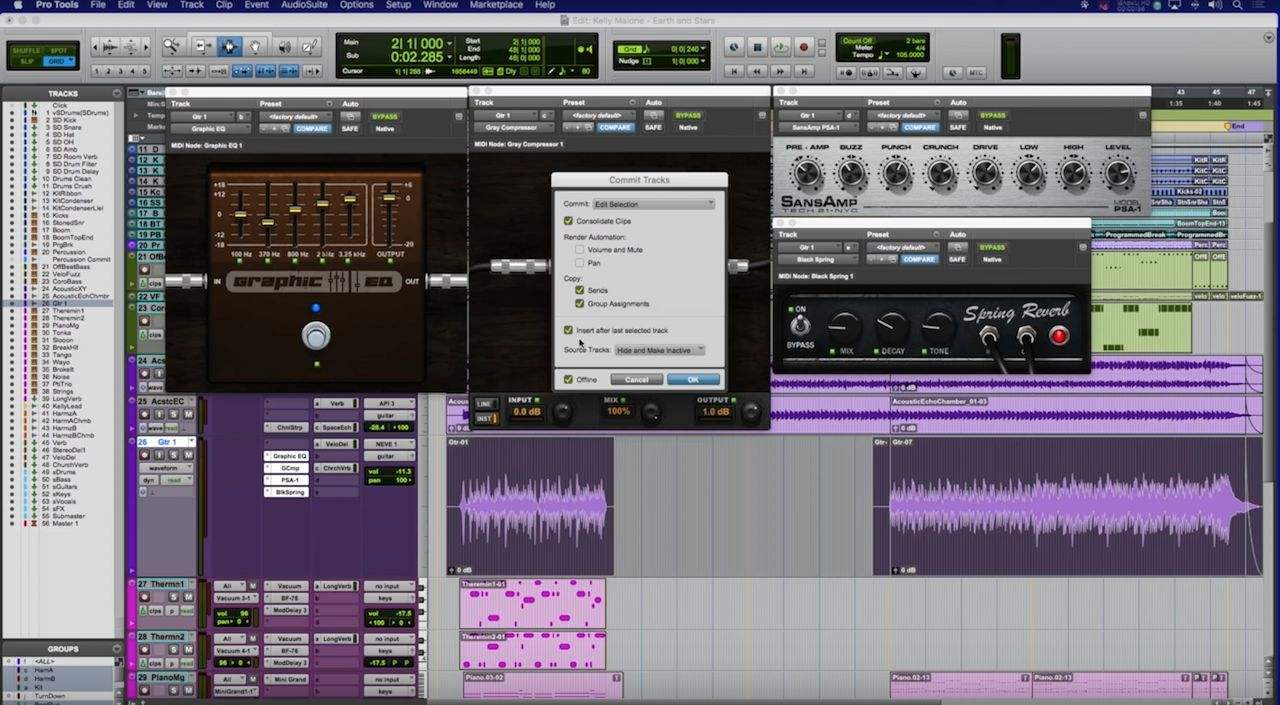
PRO TOOLS HD HOW TO
The Left means that this set of tracks will be panned to the left side of the stereo field.The Acc means that we didn’t know how to spell acoustic when the tracks were named. For acoustic guitars in this project, it’s simple It’s important to adopt a systematic track naming convention when working with large numbers of tracks. The pan values for this set of tracks are identical because we are using the two microphones to shape a single mono sound. The blend of the volume fader levels produce the sound we liked the most for rough mixes during the recording phase of the project.
PRO TOOLS HD PRO
The direct from the Fishman pickup, the KM184, and the Royer 121 were always recorded into analog inputs channels named A6, A8, and A7 of the Pro Tools HD as shown in figure x. The structure for recording all acoustic guitar in this project called for three audio tracks. Drums are performed by Kevin Aiello.Thanks to Eric Barnett for providing me with deep exposure to the art of guitar double-tracking and guitar layering.

Used with permission.These samples used here are from a tune called Maiden Voyage, conceived by Damien Sisson.Acoustic and electric guitars are performed by Eric Barnett.

The musical performances contained here are performed by Points North. The bass overdubs were done after drums, and then the guitars were overdubbed.Unless otherwise noted, all audio samples are raw, unprocessed recordings (unmixed / no processing). Guitar and bass tracks were considered temporary ‘guide’ tracks, which were later replaced during separate overdubbing sessions. Although the bass and guitar were recorded during the drum tracking session, emphasis was placed on the capturing good drum tracks without any bleed from the bass or guitar intro the drum microphones. A decision was made at the outset of the project that the production style would take advantage of recording studio tools and techniques to create a richer sound than can be achieved with a three-piece band in a live setting.įirst, the drums were recorded along with the guitar and bass players performing to ensure the drummer could get the vibe that comes with performing with his band mates. The talent recorded was Points North, a three-piece San Francisco Bay Area instrumental rock band consisting of a drummer, bass player, and guitar player. The techniques and examples mentioned here are taken from an actual Foothill College student recording project. However, the images of Pro Tools contained in this paper were captured using Pro Tools LE running with a Digi 002, so not all of the images are accurate representations of what it actually looks like in practice on an HD system. Several key elements of the example project described in this paper were accomplished on a Pro Tools 8 HD2 system using features available only with Pro Tools HD. When mixing this type of material, additional techniques are called for that are beyond the scope of this article. Emphasis is placed on techniques that are helpful during the recording phase. I describe the double tracking technique and show a few ways to help manage a Pro Tools recording session that contains a large number of layered and doubled tracked guitar parts. The situation can become unmanageable without a strategy for managing all these tracks. A Pro Tools session with many double tracked guitar parts using multiple microphones can quickly accumulate a large number of tracks. This technique is commonly referred to as double tracking. This post describes techniques for recording multiple identical guitar performances onto separate audio tracks in order to achieve a thicker and richer guitar sound.


 0 kommentar(er)
0 kommentar(er)
